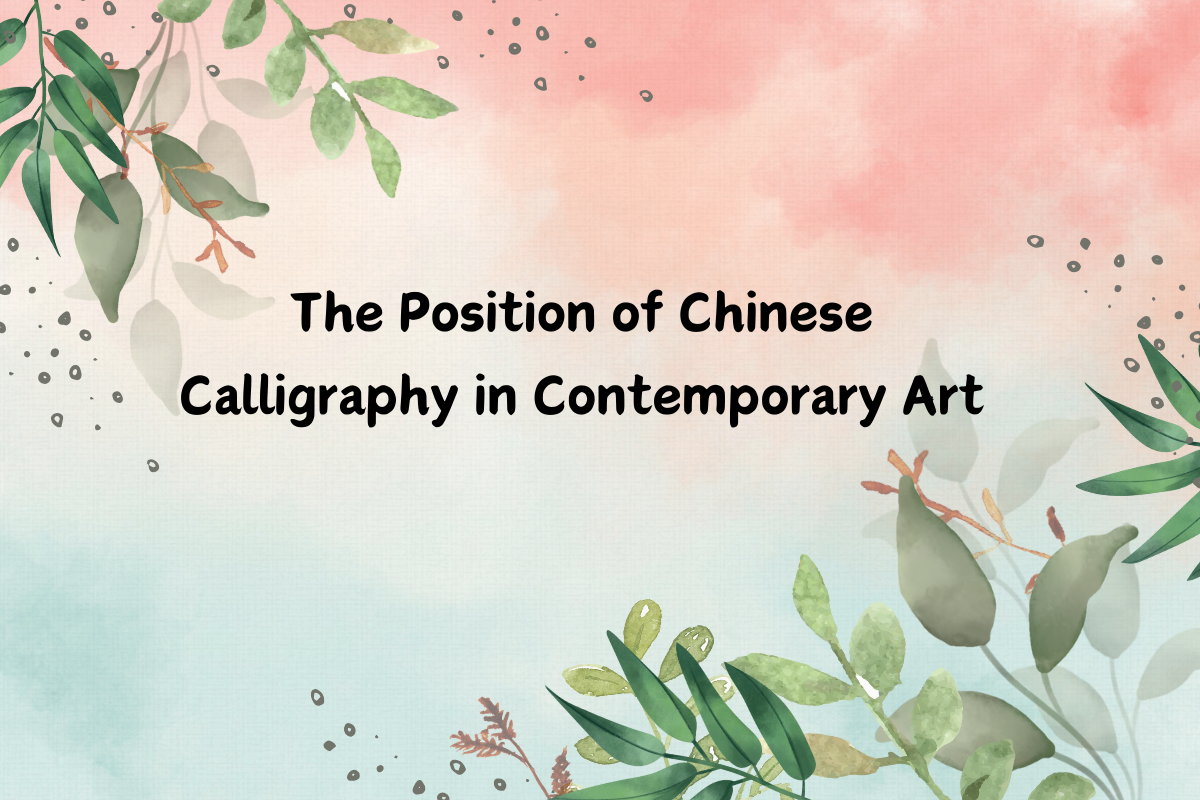The Position of Chinese Calligraphy in Contemporary Art
Chinese calligraphy, with its rich history and unique aesthetic qualities, holds a significant position in the realm of contemporary art. While often regarded as a traditional art form, calligraphy continues to inspire and influence artists around the world.

Evolution of Chinese Calligraphy
Chinese calligraphy traces its origins back thousands of years, evolving from ancient pictographs into a sophisticated art form characterized by intricate brushwork and expressive forms. Throughout history, calligraphy has been intertwined with various aspects of Chinese culture, including literature 文学 (wén xué), philosophy, and aesthetics, shaping the artistic landscape of the nation.
文学 (wén xué), noun, literature
Examples:
- I enjoy reading literature in my free time.
我喜欢在空闲时间阅读文学。
wǒ xǐhuān zài kòngxián shíjiān yuèdú wénxué. - She studied English literature in university.
她在大学里学习了英国文学。
tā zài dàxué lǐ xuéxíle yīngguó wénxué.

Influence on Contemporary Art
Despite its traditional roots, Chinese calligraphy remains a dynamic force in contemporary art. Many contemporary artists draw inspiration from calligraphic techniques, incorporating elements of brushwork, line, and composition into their works. Calligraphy's emphasis on spontaneity, rhythm, and expression resonates with modern sensibilities, providing a unique visual language 语言 (yǔ yán) for artists to explore.
语言 (yǔ yán), noun, language
Examples:
- English is a widely spoken language around the world.
英语是世界上广泛使用的语言。
Yīngyǔ shì shìjiè shàng guǎngfàn shǐyòng de yǔyán. - Learning a new language can broaden your horizons.
学习一门新语言可以拓展你的视野。
Xuéxí yī mén xīn yǔyán kěyǐ tuòzhǎn nǐ de shìyě.
Cross-Cultural Dialogue
Chinese calligraphy has also fostered cross-cultural dialogue and exchange within the global art community. As interest in Eastern art continues to grow, calligraphy serves as a bridge between Eastern and Western artistic traditions, inviting audiences to appreciate its beauty and complexity. Through exhibitions, workshops, and collaborations, calligraphers and artists from diverse backgrounds come together to explore new possibilities and interpretations.
Key Sentences:
- Chinese calligraphy holds a prominent position in contemporary art.
中国书法在当代地位很高。
Zhōngguó shūfǎ zài dāngdài dìwèi hěn gāo. - Many art enthusiasts enjoy learning calligraphy.
很多学习艺术的人都喜欢学习书法。
Hěnduō xuéxí yìshù de rén dōu xǐhuān xuéxí shūfǎ. - I searched online for the status of calligraphy.
我上网搜索了书法的地位。
Wǒ shàngwǎng sōusuǒle shūfǎ de dìwèi.
Related Articles
- The Influence of Chinese Calligraphy at Home and Abroad
- How Popular is Calligraphy in China
- Can You Do Chinese Calligraphy on Normal Paper
- Different Regional Styles and Characteristics of Chinese Calligraphy
- Origin and History of Chinese Calligraphy
- What Is the Hardest Form of Calligraphy
- Tools and Materials of Chinese Calligraphy